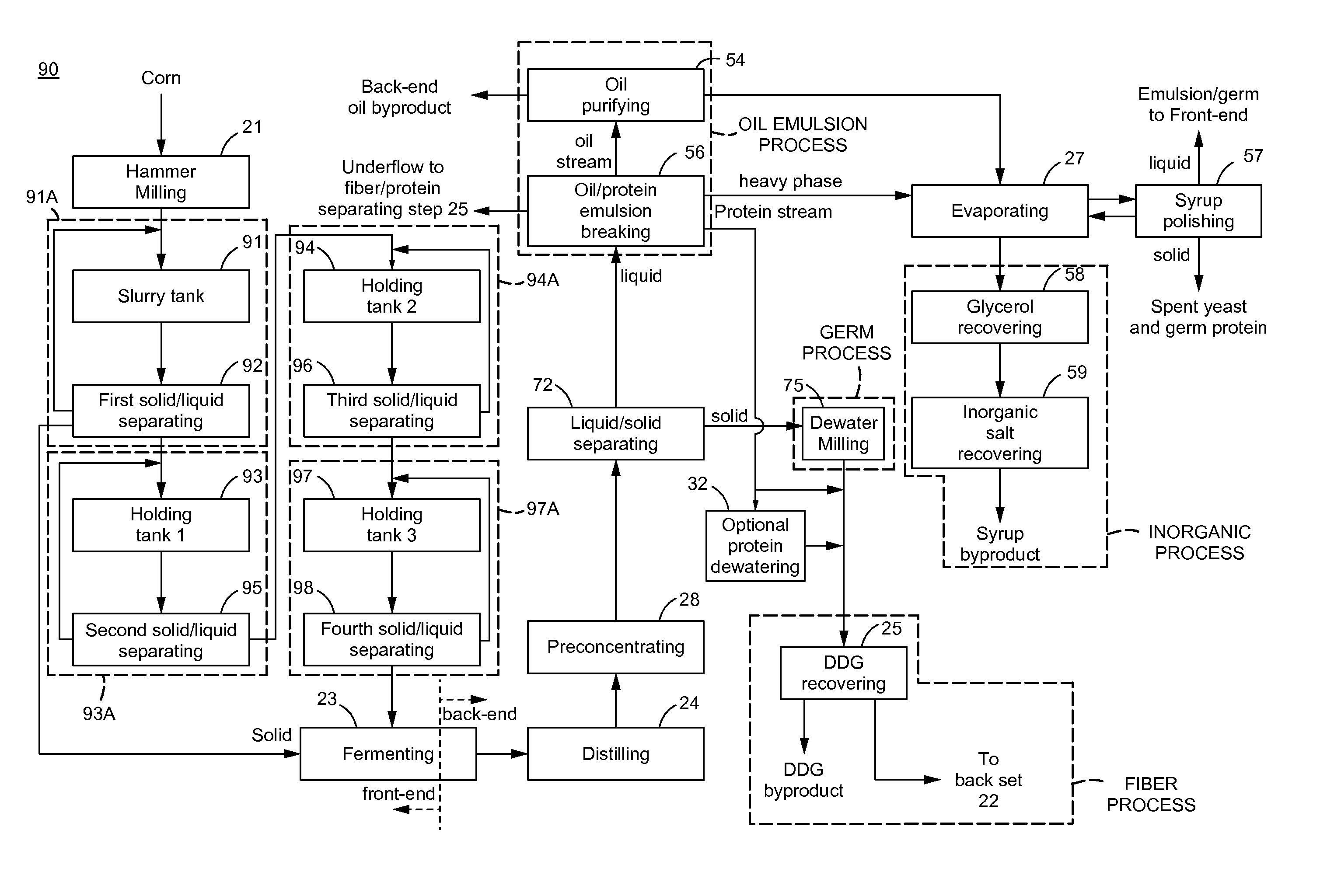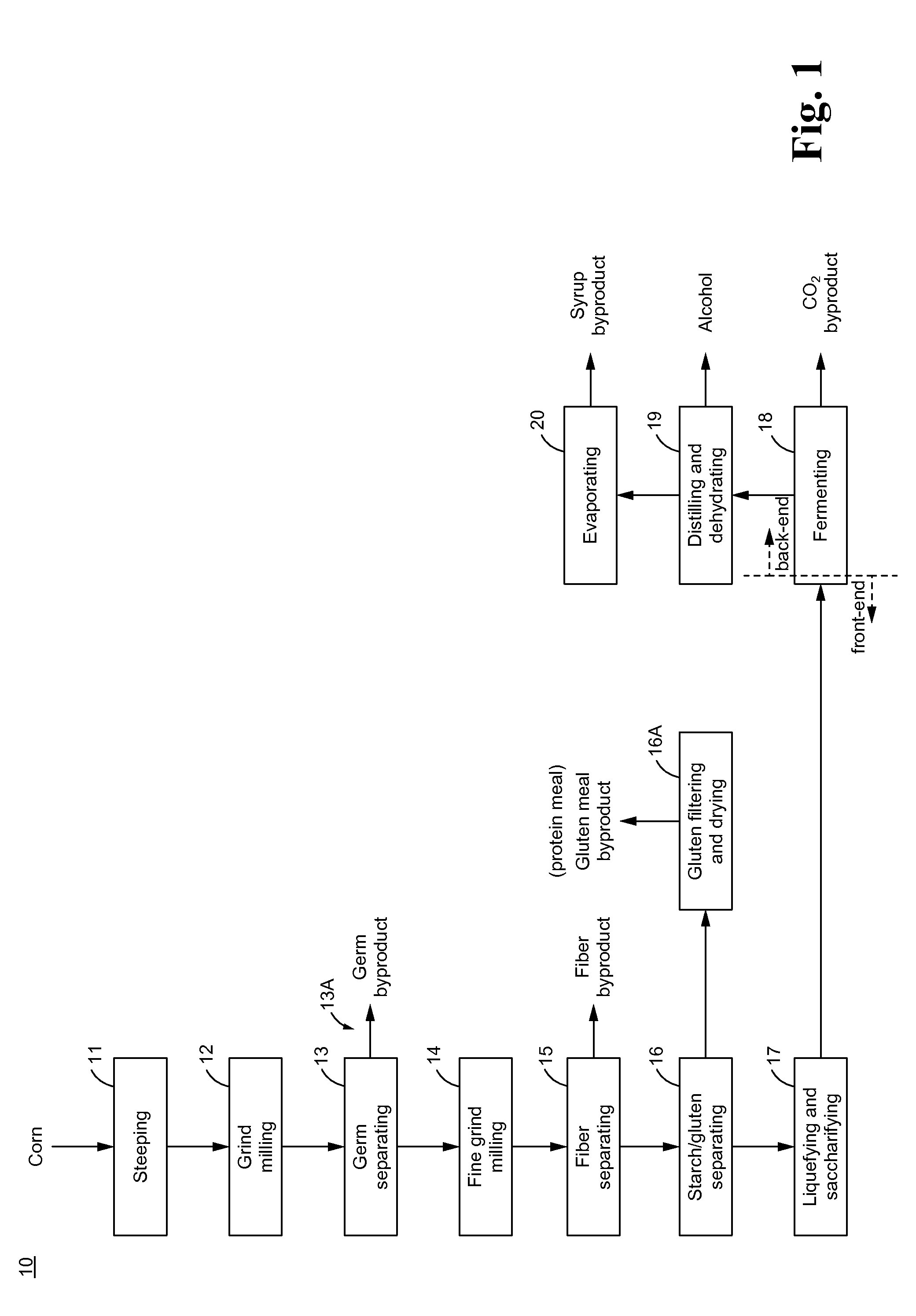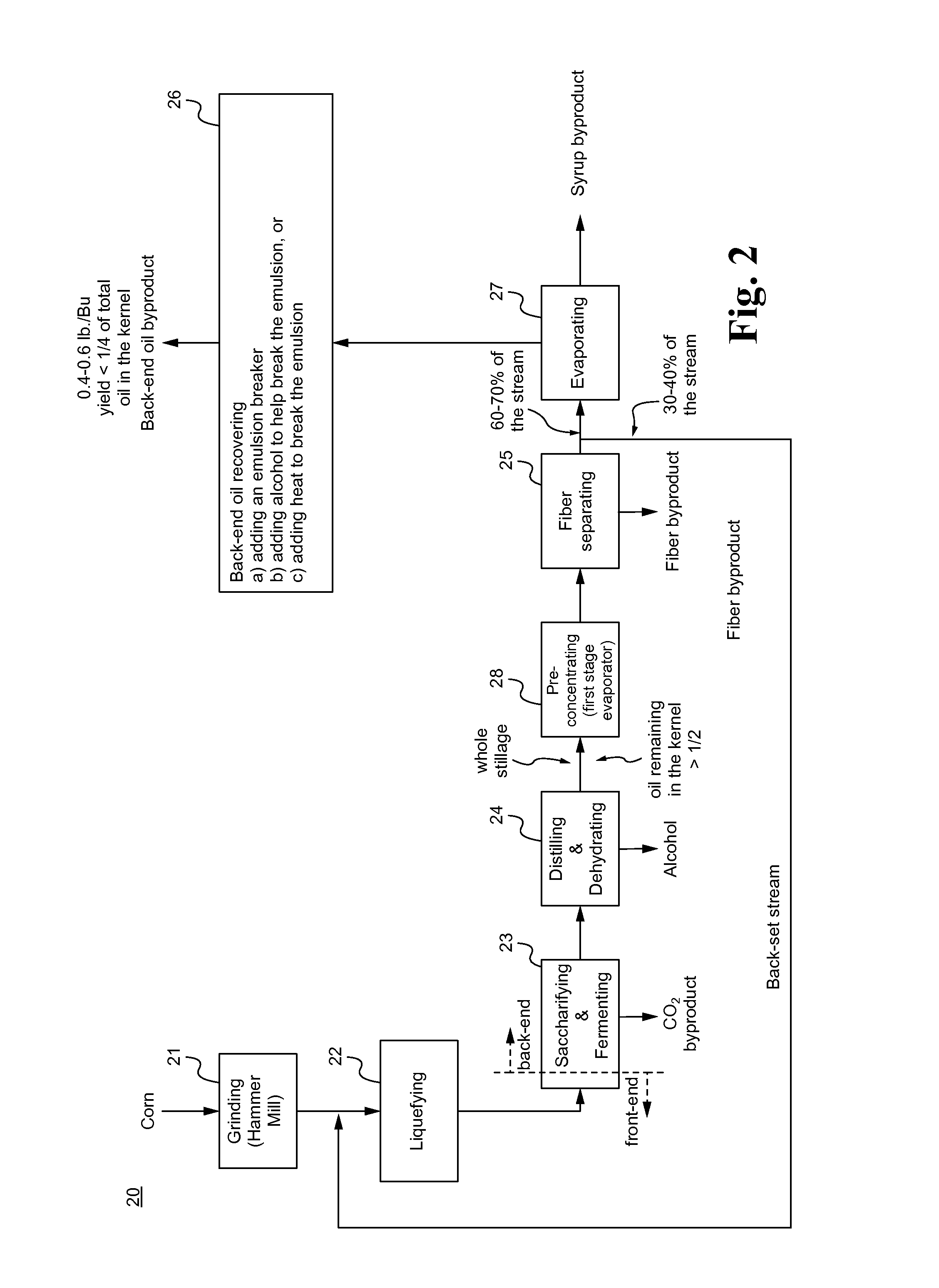Method of and system for producing oil and valuable byproducts from grains in dry milling systems with a back-end dewater milling unit
a technology of dry milling and alcohol production system, which is applied in the direction of fatty substance recovery, grain treatment, fatty oil/acid recovery from waste, etc., can solve the problem of reducing the germ particle size about half of its original size, and achieves higher % of alcohol yield, high oil quality, and high capital investment
- Summary
- Abstract
- Description
- Claims
- Application Information
AI Technical Summary
Benefits of technology
Problems solved by technology
Method used
Image
Examples
Embodiment Construction
[0075]A typical dry milling alcohol plant produces only one byproduct, which is called DDGS containing about 29%˜31% of protein, 11%˜13% of oil and 4%˜6% of starch. The DDGS yield is about 15.6 lb. / Bu, which has around 4.7 lb. / Bu of protein, 2 lb. / Bu of oil and 0.8 lb. / Bu of starch. DDGS generated at the typical dry milling plant has a low selling price even though it has a high protein and oil content. The low selling price of the DDGS generated at the typical dry milling plant is because that too many fibers are in the DDGS, which is only good as feed for animals like cow and not good for chicken or fish.
[0076]In some embodiments, the processes and / or devices of the present invention is able to separate the individual compounds / components in the DDGS to be in a more pure form and to become a more valuable byproduct, such as white fiber (less than 10% of protein, less than 3% of oil, and less than 2% of starch) for secondary alcohol feed stock, raw material for water resistant pulp...
PUM
| Property | Measurement | Unit |
|---|---|---|
| temperature | aaaaa | aaaaa |
| temperature | aaaaa | aaaaa |
| particle sizes | aaaaa | aaaaa |
Abstract
Description
Claims
Application Information
 Login to View More
Login to View More - R&D
- Intellectual Property
- Life Sciences
- Materials
- Tech Scout
- Unparalleled Data Quality
- Higher Quality Content
- 60% Fewer Hallucinations
Browse by: Latest US Patents, China's latest patents, Technical Efficacy Thesaurus, Application Domain, Technology Topic, Popular Technical Reports.
© 2025 PatSnap. All rights reserved.Legal|Privacy policy|Modern Slavery Act Transparency Statement|Sitemap|About US| Contact US: help@patsnap.com



